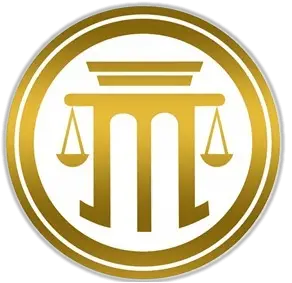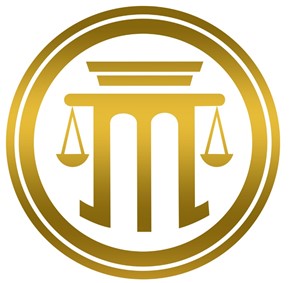Treachery is a specific factor that can make a crime more serious or raise the harshness of the offender’s punishment. We will discuss treachery as an aggravating circumstance. It can qualify a crime as well. Treachery refers to attacking or hurting someone in such a way that they are unable to protect themselves or are caught off guard.
Attacking someone from behind, while he or she is sleeping, or when they are otherwise oblivious of the danger are examples of treacherous strategies. When treachery is regarded an aggravating factor, it means that the offense is judged with severity than it would be without such. As a result, the offender’s punishment is legally augmented, such as longer prison sentence.
Treachery as an Aggravating Circumstance
The inclusion of treachery as an aggravating condition in criminal law reflects society’s recognition that acts of treachery accompanying the commission of a crime are especially abhorrent and warrant greater punishments. By identifying treachery as an aggravating circumstance, the law seeks to deter the same and make those who perpetrate them accountable for their conduct.
Applicable only to Crimes against Persons
As its definition specifies, treachery is pertinent only to crimes against the person. The means, methods, or forms do not have to guarantee the commission of the offense, but they must insure its execution. There is treachery even if the offense is not consummated, if it is proved by clear and convincing evidence.
Treachery cannot be considered where there is nothing in the record to show that the accused has consciously adopted a mode or method to insure the killing of the deceased, or remove or diminish any risk to himself that may arise from the defense and/or retaliation that the victim might make. These may find significance as when the victim was asleep, half-awake or just awakened, being held without power to free himself, having lunch, or attacked from behind.
Attack must be Consciously Adopted
The mode of attack must be consciously adopted. This means that the offender must make some preparation to kill the deceased and his mode of attack must be thought of and not just from unexpected turn of events.
Point and Time to Consider
When the aggression is continuous, treachery must be present in the beginning of the assault or if not continuous and that there was interruption, it is sufficient that treachery was present at the moment the fatal blow was given.
Treachery Appreciated in Special Complex Crime
Treachery is taken into account even if the crime against the person is complexed with another felony involving a different classification in the Revised Penal Code. As a result, in the special complex crime of robbery with homicide, treachery can exist, and be appreciated, insofar as the killing is concerned.
Treachery and Conspiracy
Treachery is taken against all the offenders when there is conspiracy. When offenders conspire, treachery is weighed against all those who conspired, even if only one of them delivered the deadly wound to the victim.
Killing a Child is always Treachery
There is treachery in killing a child even if the manner of the attack is not shown. The rule is because of the weakness of the victim due to his tender age rendering the absence of any danger to the accused.
Night Time and Treachery
Except when circumstances indicate that night time and treachery might be seen as different aggravating factors, night time is inherent in treachery since it forms part of the specific treacherous means and manner employed to insure the execution of the crime.
Killing with the Use of Poison | Treachery is Inherent
Treachery is inherent in murder by poisoning because of the defenseless of the victim. Poisoning is a particularly perilous technique of murder because the victim is defenseless against the poison. Poisoning, unlike other forms of murder such as physical assault, can be difficult to detect, and the victim may not even be aware that they have been targeted until it is too late.
Poisoning is a particularly subtle and despicable kind of murder since it avoids direct confrontation with the victim and allows the perpetrator to avoid detection more readily. This underlying treachery is one of the reasons why poisoning is seen as a particularly horrible crime.
Instances when there is no Treachery
There is no treachery when the attack is perpetrated in a frontal encounter, as shown by the location of the wounds on the front part of the victim’s body and there is no wound in the back, unless contrary is proven otherwise.
There is no treachery when the initial assault on the victim is not made in a sudden and unexpected manner or when the offender has announced his presence or when the victim is alerted to the impending attack of the offender due to their preceding heated arguments.
There is no treachery when there is no proof that the death of the victim was the result of the meditation, calculation, or reflection, such that the decision to kill was sudden and was not deliberately sought by the accused, but was purely incidental. For instance, the meeting between the accused and the victim was casual, and the attack was carried out on the spur of the moment.
Treachery exists when the perpetrator adopts tactics that tend directly and specifically to secure and insure the execution of the offense, without risk to himself arising from the defense that the offended party might make.
When the conduct was a reaction to an actual or imagined provocation supplied by the victim, a rapid and unexpected attack does not always imply treachery.
Relevant Jurisprudence
In People vs. Lacao,1 the Court held that the deceased was stabbed without warning the moment he unsuspectingly released the hand of Baltazar Lacao. So sudden and unanticipated was the attack that the victim was given no chance to defend himself.
Then, herein appellants, although apparently acting without prior agreement, also instantly and all together attacked him. Even if their aforesaid acts were independently performed on their individual initiatives, such concerted action ensured the commission of the crime without risk to them arising from any defense or retaliation that the victim might have resorted to. Treachery was thus correctly appreciated against all appellants, the use of superior strength being absorbed as an integral part of the treacherous mode of commission.2
In People vs. Rey,3 the Court held that:
“Treachery in the shooting of Nicolas Pagayunan was established by the testimony of Babette Pagayunan who declared that the accused-appellant suddenly and without warning shot the deceased as the latter was waiting for his pail to be filled with water and while talking to the son of the accused-appellant.4
“The attack was sudden, unexpected, without warning, and without giving the victim an opportunity to defend himself or repel the aggression. In fact, the deceased did not sense any danger that he would be shot by the defendant-appellant as there was no previous grudge or misunderstanding between them.”4
In People vs. Parana,5 the Court held that:
“The appellant, in in spite of having seen the deceased in the upper story of Lapuos’ house, did not wish to attack the latter there undoubtedly to avoid his being defended by the many players who were with him. Instead, he waited for the deceased at a merely store until the latter came down, and attacked him while he had his back turned and could not see the appellant.6
“All these, which were the beginning of the execution of the appellant’s design to kill the deceased, constitute treachery inasmuch as they tended to avoid every risk to himself arising from the defense which the deceased might make.”6
In People vs. Tumaob,7 the Court ruled that:
“In the present case, the circumstance that an attack was sudden and unexpected to the person assaulted did not constitute the element of alevosia necessary to raise a homicide to murder, where it did not appear that the aggressor had consciously adopted a mode of attack intended to facilitate the perpetration of the homicide without risk to himself. In the present case, the circumstances negative the hypothesis that the defendant reflected on the means, method and form of killing the offended party.”8
In People vs. Reynaldo Santos,9 the Court ruled that:
“Treachery, just like any other element of the crime committed must be proved by clear and convincing evidence sufficient to establish its existence beyond reasonable doubt. It is not to be presumed or taken for granted from a mere statement that “the attack was sudden”; there must be a clear showing from the narration of facts why the attack or assault is said to be “sudden”. A nebulous atmosphere sounding the attack is not to be tolerated especially where the liberty and life of an individual is at stake.”10
In People vs. Ybañez,11 the Court ruled that there was no treachery.
“The attack was perpetrated in a frontal encounter as indubitably shown by the location of the wounds on the front part of the victim’s body. There were no wounds on the back. The assailants did not make any deliberate, surprise attack on the victim.12
“They did not consciously adopt a treacherous mode of attack. They did not employ means, methods or forms in assaulting Donayre which tended directly and specially to insure the consummation of the killing without any risk to themselves arising from any defense which he might have made.”12
In People vs. Manzano,13 the Court held that there was no treachery at the inception of the attack. The initial assault on Quintos was not made in a sudden and unexpected manner. The malefactors gave him an ominous warning of their presence and heralded their entrance into his house by firing two gunshots at the ground. They first mauled him presumably in a frontal encounter.14
In US vs. Balagtas,15 the Court ruled that there must be an evidence that the accused had, prior to the moment of killing, resolved to commit the crime. It must be shown that the treacherous acts were present at and preceded the commencement of the attack which caused the injury complained of.16
In People vs. Casalme,17 the Court ruled that treachery does not connote the element of surprise alone, but exists when the offender employs means, methods, or forms which tend directly and specially to insure the execution of the offense, without risk to himself arising from the defense which the offended party might make. When appellant accosted his victim, who could have no idea as to just how the threat to him would be carried out, and without warning shot him five times, nothing could possibly have been done by the latter in his own defense.18
In People vs. Sabanal,19 the Court ruled that:
“It does not always follow that because the attack is sudden and unexpected, it is tainted with treachery. Indeed, it could have been done on impulse, as a reaction to an actual or imagined provocation offered by the victim.20
“In the case before us, there was already an open hostility between the Salas and Sabanal families when Bienvenido inquired from Benito as to the whereabouts of Macario. Benito’s curt answer and his turning away in dismissal of Bienvenido must have so infuriated Bienvenido that he drew his bolo and impulsively hacked in anger.”20
In People vs. Cañete,21 the Court held that one continuous attack, such as the one which resulted in the death of the deceased Flores, cannot be broken up into two or more parts and made to constitute separate, distinct, and independent attacks so that treachery may be injected therein and considered as a qualifying or aggravating circumstance.22
In US vs. Baluyot,23 the Court held that even though the beginning of an attack resulting in the death of the deceased is free from treachery of any sort, nevertheless it will be found present if, at the time the fatal blow is struck, the deceased is helpless and unable to defend himself.24
In US vs. Oro,25 the Court held that:
“The qualifying circumstance of alevosia enters into the commission of this crime, since the defendant caused the death of the child without any risk whatever to himself.”26
In People vs. Retubado,27 the Court said that:
Treachery, as alleged in the Information, must be considered qualifying and must be appreciated against the accused. The killing of a child is murder even if the manner of attacked was not shown. The qualifying circumstances of treachery or “alevosia” exists in the commission of the crime of murder when an adult person illegally attacks a child of tender years and causes his death.28
In People vs. Corpuz,29 the Court ruled that record shows that:
“The killing was qualified by treachery, for, aside from the fact that the attack was sudden and unexpected, the deceased Juan Tobias had his back turned when he was first struck on the back of the head at the inception of the aggression, catching him totally unprepared to make a defense of his person.30
“Under such circumstances, defendants-appellants employed means, methods or forms in the execution of the crime which tended directly and specially to insure its execution without risk to themselves. Although the crime was committed at nighttime, nocturnity is absorbed by treachery.”30
In People vs. Caliso,31 the Court held that:
“Treachery cannot be considered to aggravate the penalty as it is inherent in the offense of murder by means of poisoning. Similarly the finding of the trial court that the appellant acted under an impulse so powerful as naturally to have produced passion and obfuscation should be discarded because the accused, in poisoning the child, was actuated more by a spirit of lawlessness and revenge than by any sudden impulse of natural and uncontrollable fury and because such sudden burst of passion was not provoked by prior unjust or improper acts of the victim or of his parents, since Flora Gonzalez had the perfect right to reprimand the defendant for indecently converting the family’s bedroom into a rendezvous of herself and her lover.”32
Significance of Article 14, Paragraph 16 of the Revised Penal Code
Article 14, Paragraph 16 of the Revised Penal Code is one of the circumstances aggravating the criminal liability of the offender when the crime he committed was with treachery and the victim was incapable of defending himself at the time of the attack; and that the offender consciously adopted the particular means, method, or form of attack in the execution thereof which tend directly and especially to insure its execution, without risk to himself arising from the defense which the victim might have mounted.
Treachery is applicable only to crimes against the person. There is no treachery when the initial assault on the victim is not abrupt and unexpected, when the offender announces his presence, or when the victim is forewarned of the offender’s impending attack due to their heated arguments preceding the assault. The means, methods, or forms need not insure accomplishment of the crime but shall insure its execution. Even if the offense has not been consummated, treachery exists if it can be proven by clear and convincing evidence.
When an offender commits a crime involving treachery, his criminal liability is aggravated. There is treachery when the offender performs any of the offenses against the person using means, methods, or forms in its implementation that aim directly and specially to secure its execution, without risk to himself coming from the offended party’s defense.
- G.R. No. L-32078, September 30, 1974[↩]
- Ibid.[↩]
- G.R. No. 80089, April 13, 1989[↩]
- Ibid.[↩][↩]
- G.R. No. L-45373, March 31, 1937[↩]
- Ibid.[↩][↩]
- G.R. No. L-2300, May 27, 1949[↩]
- Ibid.[↩]
- G.R. No. L-32073, October 23, 1978[↩]
- Ibid.[↩]
- G.R. No. L-30421, March 28, 1974[↩]
- Ibid.[↩][↩]
- G.R. No. Nos. L-33643 and L-33644, July 31, 1974[↩]
- Ibid.[↩]
- G.R. No. L-6432, March 22, 1911[↩]
- Ibid.[↩]
- G.R. No. L-18033, July 26, 1966[↩]
- Ibid.[↩]
- G.R. No. 73486-87, April 18, 1989[↩]
- Ibid.[↩][↩]
- G.R. No. L-19233, February 5, 1923[↩]
- Ibid.[↩]
- G.R. No. L-14476, November 6, 1919[↩]
- Ibid.[↩]
- G.R. No. L-5781, August 14, 1911[↩]
- Ibid.[↩]
- G.R. No. L-58585, June 20, 1988[↩]
- Ibid.[↩]
- G.R. No. L-12718, February 24, 1960[↩]
- Ibid.[↩][↩]
- G.R. No. 37271, July 1, 1933[↩]
- Ibid.[↩]


